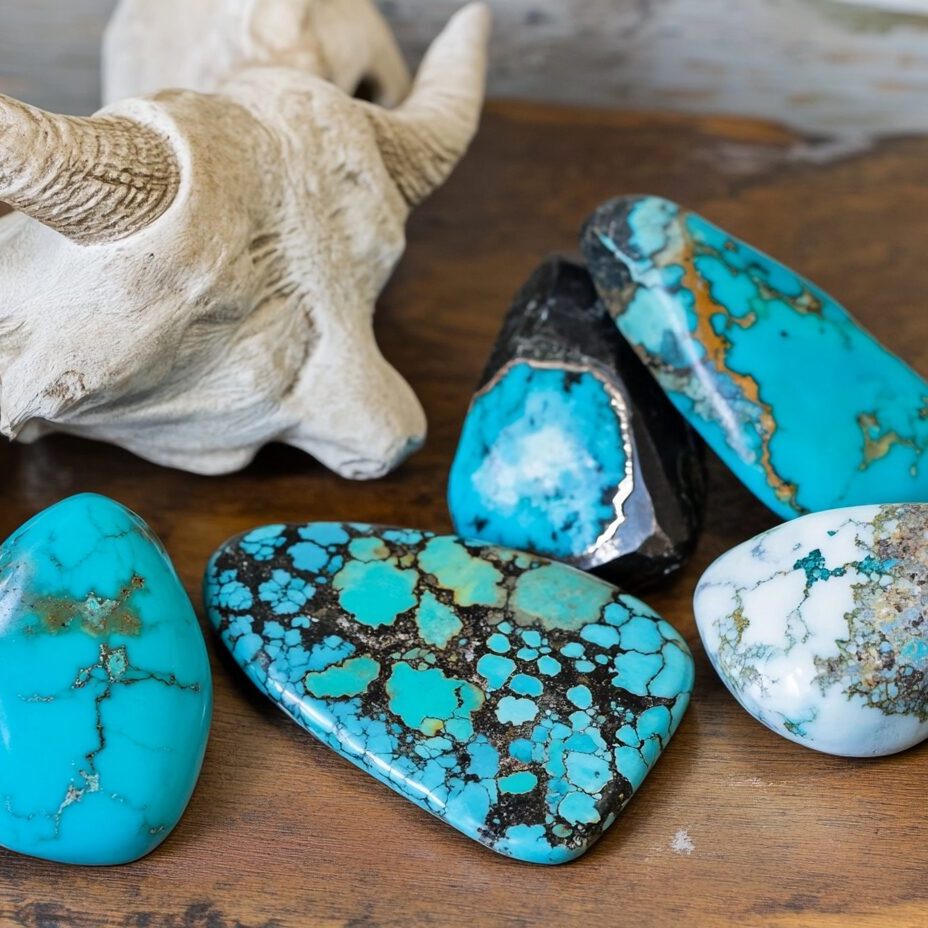
Types of Turquoise: How They’re Formed and What Makes Each One Unique
Turquoise is one of the most beloved gemstones in the world, prized for its calming blue-green hues, spiritual symbolism, and rich cultural history. But did you know that not all turquoise is the same?
The variations you see in color, hardness, matrix pattern, and rarity come down to how and where turquoise forms. From the sky-blue gems of Arizona to the lime-green stones of Nevada, every type of turquoise tells a unique geological and cultural story. These are the most popular types of turquoise and how they are formed, from White Buffalo to Bisbee.
How Is Turquoise Formed?
Turquoise forms deep underground over millions of years. It begins when rainwater seeps into the earth, dissolving minerals like copper, aluminum, and phosphate. When these minerals meet the right combination of pressure and temperature, they crystallize into what we know as turquoise.
- Copper gives turquoise its signature blue tones.
- Iron can shift the hue toward green.
- Zinc may produce rare lime-green or apple-green turquoise.
This slow percolation through host rock, often sandstone or limonite, also creates the dark veins or patterns known as the matrix.
Because this process is so specific, turquoise only forms in select areas around the world, specifically in the Southwestern United States, Iran, China, and Egypt.
What Makes Turquoise Varieties Different?
While all turquoise is formed from similar base elements, the specific conditions of each mine, such as trace minerals, altitude, temperature, and host rock create distinctive characteristics.
Here is a list of the most popular types of turquoise, and what makes each one special.
1. White Buffalo (Not True Turquoise)
- Location: Tonopah, Nevada
- Color: Creamy white with black or brown matrix
- Hardness: 5–6 on the Mohs scale
- Fun Fact: Despite the name, White Buffalo isn’t technically turquoise—it’s actually a white form of dolomite or calcite.
White Buffalo stone is often mistaken for turquoise because it’s found near turquoise mines and is carved and sold similarly. Its name stems from Native American legends of the rare white buffalo, symbolizing sacred purity and good fortune.
Collectors love White Buffalo for its bold contrast and rarity in the gem world. It’s perfect for striking, minimalist jewelry and often left in natural cabochon form.
2. Sleeping Beauty Turquoise
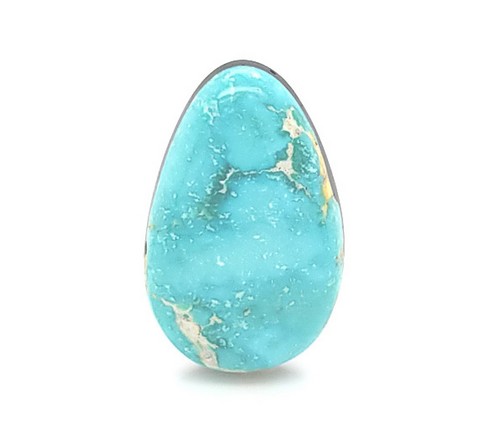
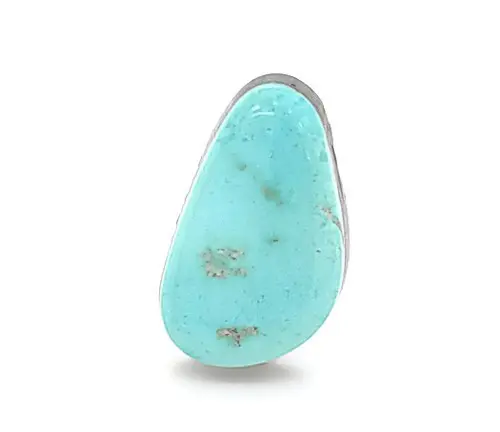
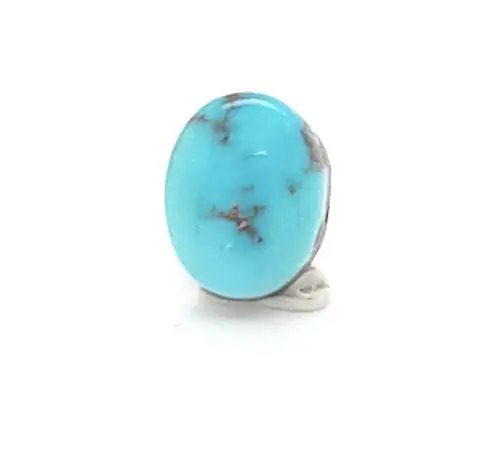
- Location: Globe, Arizona
- Color: Sky blue to robin’s egg blue
- Matrix: Minimal or none
- Notable Trait: Considered one of the purest and most prized turquoise types
Sleeping Beauty turquoise comes from a mountain range resembling a sleeping woman. Its vivid, even color and lack of matrix make it especially sought after in both fine and Native American jewelry.
The mine closed in 2012, which has made genuine Sleeping Beauty stones increasingly rare and valuable.
3. Morenci Turquoise
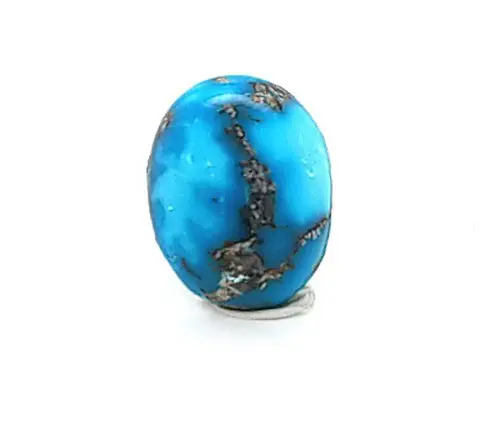
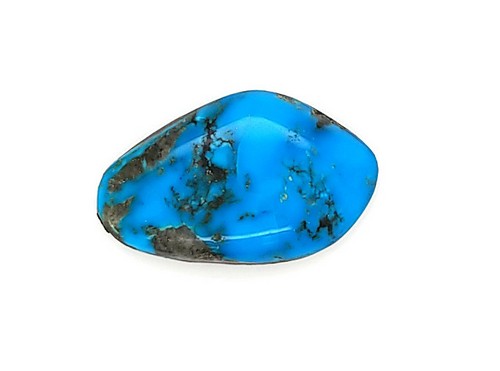
- Location: Southeastern Arizona
- Color: Rich, dark blue
- Matrix: Often includes pyrite (fool’s gold)
- Historical Significance: One of the first turquoise types mined commercially in the U.S.
Morenci turquoise is known for its deep saturation and shimmering flecks of pyrite, which give it a metallic sparkle. The mine is no longer in operation, making Morenci turquoise a highly collectible item in the gem market.
Its dramatic color and striking matrix make it a favorite among vintage turquoise fans.
4. Kingman Turquoise
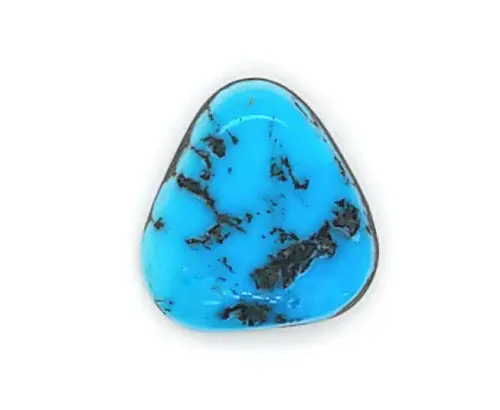
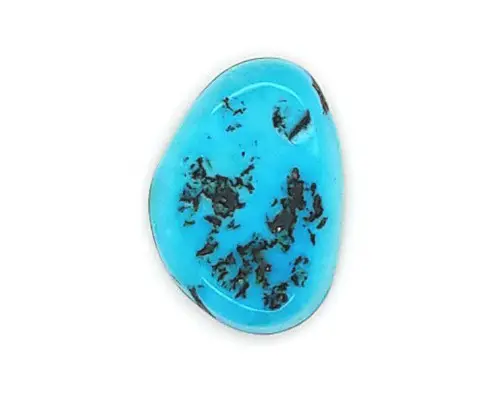
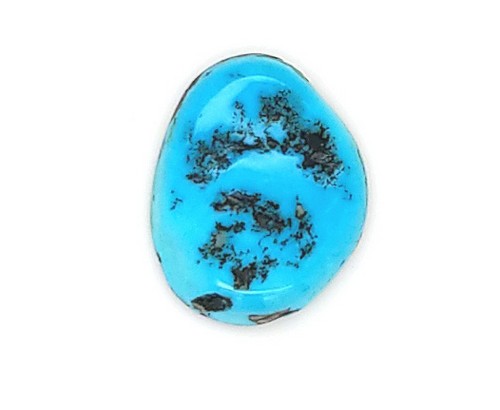
- Location: Kingman, Arizona
- Color: Light to dark blue with green hues
- Matrix: Black, brown, or white spiderweb patterns
- Fun Fact: Still actively mined today
Kingman turquoise has been used for over a thousand years, first by Native Americans and now by jewelers around the world. Its high-quality stones are often stabilized to enhance durability, especially in jewelry production.
Collectors love Kingman for its variety—some stones lean bright blue, others greenish with dramatic spiderweb veining.
5. Royston Turquoise
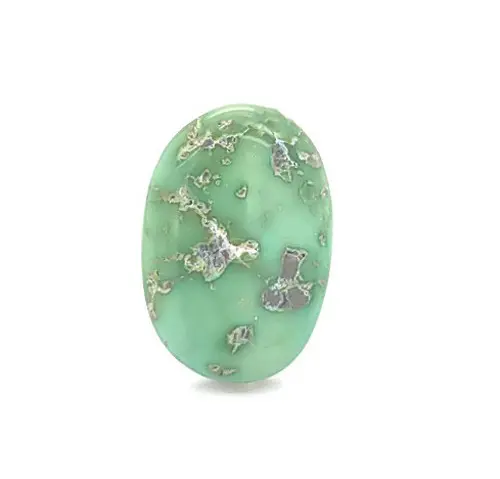
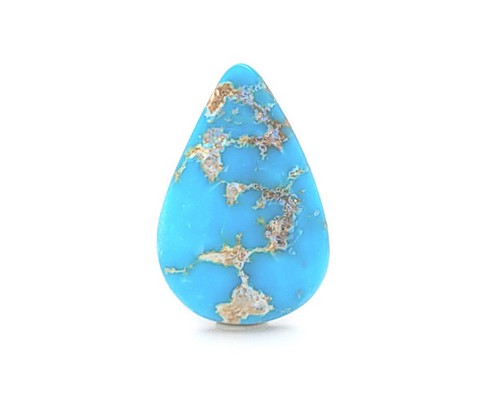
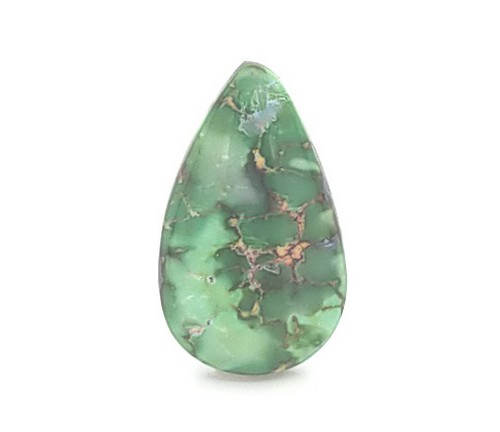
- Location: Near Tonopah, Nevada
- Color: Greenish-blue to deep green
- Matrix: Brown or golden
- Style Note: Popular in two-tone and multi-color cabochons
Royston turquoise comes from one of Nevada’s oldest turquoise mining districts. Its colors range from vibrant blues to forest greens, often in the same stone. This makes Royston incredibly eye-catching and ideal for statement jewelry.
Its distinct veining and wide range of colors make every Royston stone one of a kind.
6. Carico Lake Turquoise
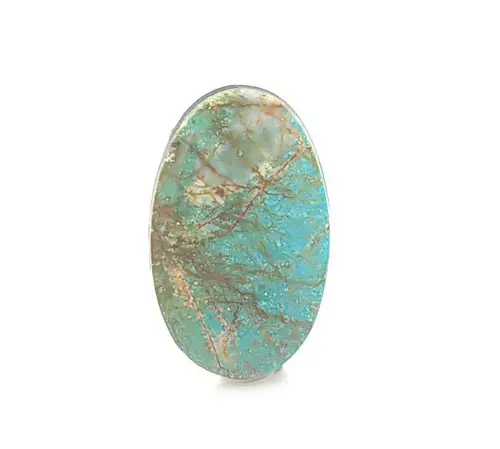

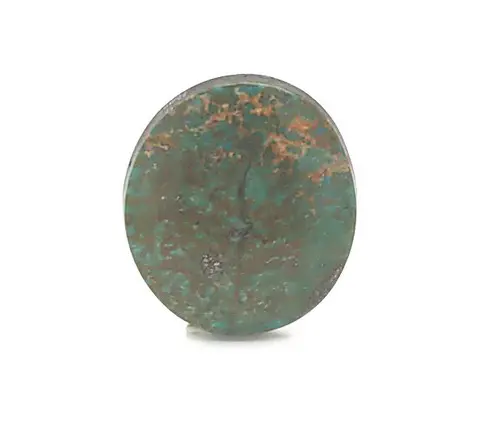
- Location: Lander County, Nevada
- Color: Lime green, apple green, or sky blue
- Matrix: Often black or dark brown
- Rarity: High, due to short mining season and remote location
Carico Lake turquoise is famous for its bright green hues—an uncommon trait in turquoise. The presence of zinc gives the stone its unique color, which is prized by designers for contemporary jewelry.
The mining window is short due to snowy winters, so availability is limited, adding to its value.
7. Bisbee Turquoise
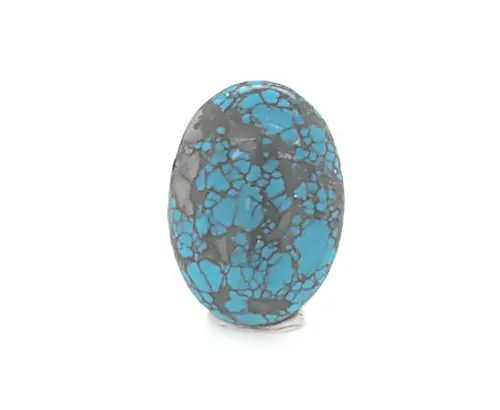
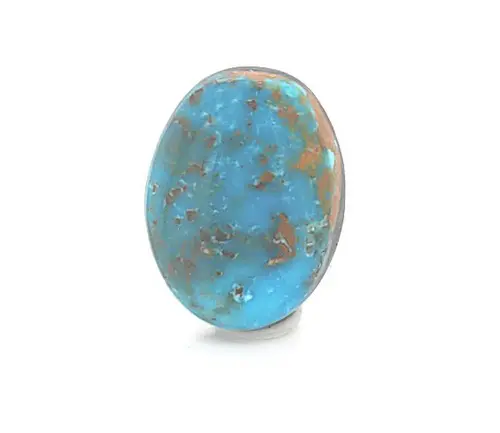
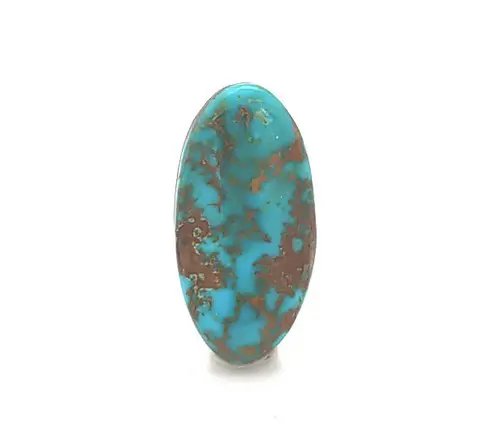
- Location: Bisbee, Arizona (Lavender Pit Mine)
- Color: “Bisbee blue” with chocolate brown matrix
- History: Once discarded as mining waste until the 1970s
- Unique Traits: High hardness, intense color saturation
Bisbee turquoise is among the most collectible and legendary turquoise varieties. Its intense, saturated blue is accented by dark matrix patterns that form swirling, almost painted designs.
The mine has been closed for decades, and much of today’s Bisbee turquoise comes from old stockpiles or estate pieces. If you find it, expect a premium price tag.
Bonus: Other Global Turquoise Types
While the U.S. dominates in turquoise diversity, there are also incredible international varieties, including:
- Persian Turquoise – From Iran, known for its clean, robin’s egg blue and no matrix.
- Chinese Turquoise – Wide color range; often treated or stabilized.
- Egyptian Turquoise – Historically used in ancient artifacts; found in the Sinai Peninsula.
How to Identify Authentic Turquoise
With demand for turquoise rising, so has the market for imitations and dyed howlite (a white stone that mimics turquoise). Here are a few tips to help you find high-quality, real turquoise stones:
- Look for origin info (mine names like Kingman or Sleeping Beauty)
- Ask if it’s stabilized (which is common and doesn’t mean it’s fake)
- Check hardness (authentic turquoise is softer than most gemstones)
- Avoid overly bright or uniform colors—they often signal dyed stones
Choosing the Right Type of Turquoise
Each type of turquoise offers something unique—from the pure, even hues of Sleeping Beauty, to the bold green swirls of Carico Lake, to the historical richness of Bisbee. Whether you’re building a jewelry collection, designing your next piece, or just starting to explore turquoise, the right stone is out there waiting for you.
Explore the stories, colors, and geological origins behind each type to find the one that resonates most. After all, turquoise isn’t just a gem—it’s a piece of the Earth’s history, shaped by time and tradition.

